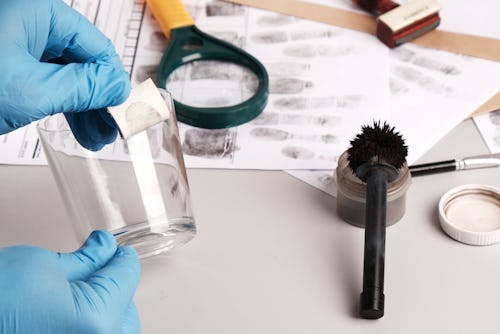White women on TikTok are making DNA binders in case they get murdered
It’s as ridiculous as it sounds.

We haven’t even made it a full week into 2023, and already there’s a controversial TikTok trend making its rounds. It involves collecting nail clippings, fingerprints, and single strands of hair. Really. It seems white women are taking to the social app to proudly display their latest DIY project: DNA binders packed with self-curated forensic evidence, just in case they go missing.
TikTok content creator @savor.it.all, whose seven-part series garnered millions of views and seemingly kicked off the viral moment, documented the entire morbid DIY process. Her own “In Case I Go Missing” binder includes private medical records, names and contact information of friends and family, and even a cheek swab preserved in a plastic baggie, among other personal items.
As is the case with any trend, critics are also chiming in. Some are poking fun at this next-level obsession with true crime (“Girl are you okay,” reads one comment on the original video), while others are taking a more pragmatic approach, sharing that a single strand of hair wouldn’t actually be enough for DNA testing if the root is missing; and that misplacing or losing this packed binder could prove detrimental due to the inclusion of sensitive information.
“I came here to say this is insane behavior,” TikToker Riley/@frogmommyyy (also a white woman), who stated that she has a bachelor’s degree in criminology and forensic science and is currently pursuing her master’s degree in forensic medicine, said in a stitched response video. “There’s a special brand of white woman who loves true crime and is therefore obsessed with being a victim of a violent crime. And it’s insane and it’s bad for your mental health, so don’t do this. This is weird.”
Another TikToker, Misha/@mishalema, shared her own theory on why she believes this trend is being perpetuated by white women specifically. “White women are so attracted to the true crime genre because in a culture where they are rapidly losing social clout and being held more and more accountable for their actions, true crime is one of the few places left that they can experience true victimhood and center themselves,” she said, citing the relatively recent societal push to uplift POC voices and promote diversity. She continued, “True crime is a place they can go where they not only get the attention and the clout that they’ve been hemorrhaging in larger society, but they can claim a true, genuine sense of victimhood.”
Misha also pointed out the disproportionate coverage of and interest in crimes with white victims versus BIPOC victims compared to the actual statistics. “Even though women of color are more likely to be victims of violent crime, it’s always been a running joke that Black and brown children can disappear by the hundreds, but let one little white girl go missing and suddenly everybody cares,” she said in the video. “So it’s not a coincidence that white women are at the center of a lot of true crime stories.”
In fact, it’s so common that there’s a term for it: “Missing white woman syndrome,” coined by late PBS anchor Gwen Ifill, which we saw on a massive scale in 2021 with the disappearance of white teenager Gabby Petito.
A 2022 YouGov poll found that 1 in 3 Americans consume true crime content. I, an Ecuadorian-American woman, am known to regularly watch documentaries and listen to podcasts about unsolved mysteries and survivors. My own fascination stems from an anxiety-ridden place; the tips and tricks I’ve picked up after one too many episodes of Forensic Files has helped me stay vigilant in all situations. It’s not about making myself the story, but about feeling informed enough and staying safe in a world that doesn’t prioritize the wellbeing of Black and brown women. The main difference between me and these white women? I’m not curating DNA binders of forensic evidence for investigators, and I’m most definitely not about to start now.